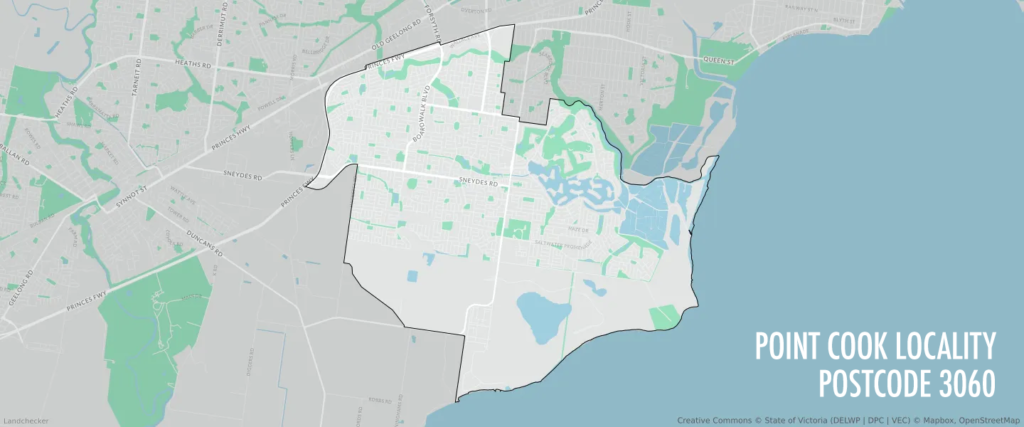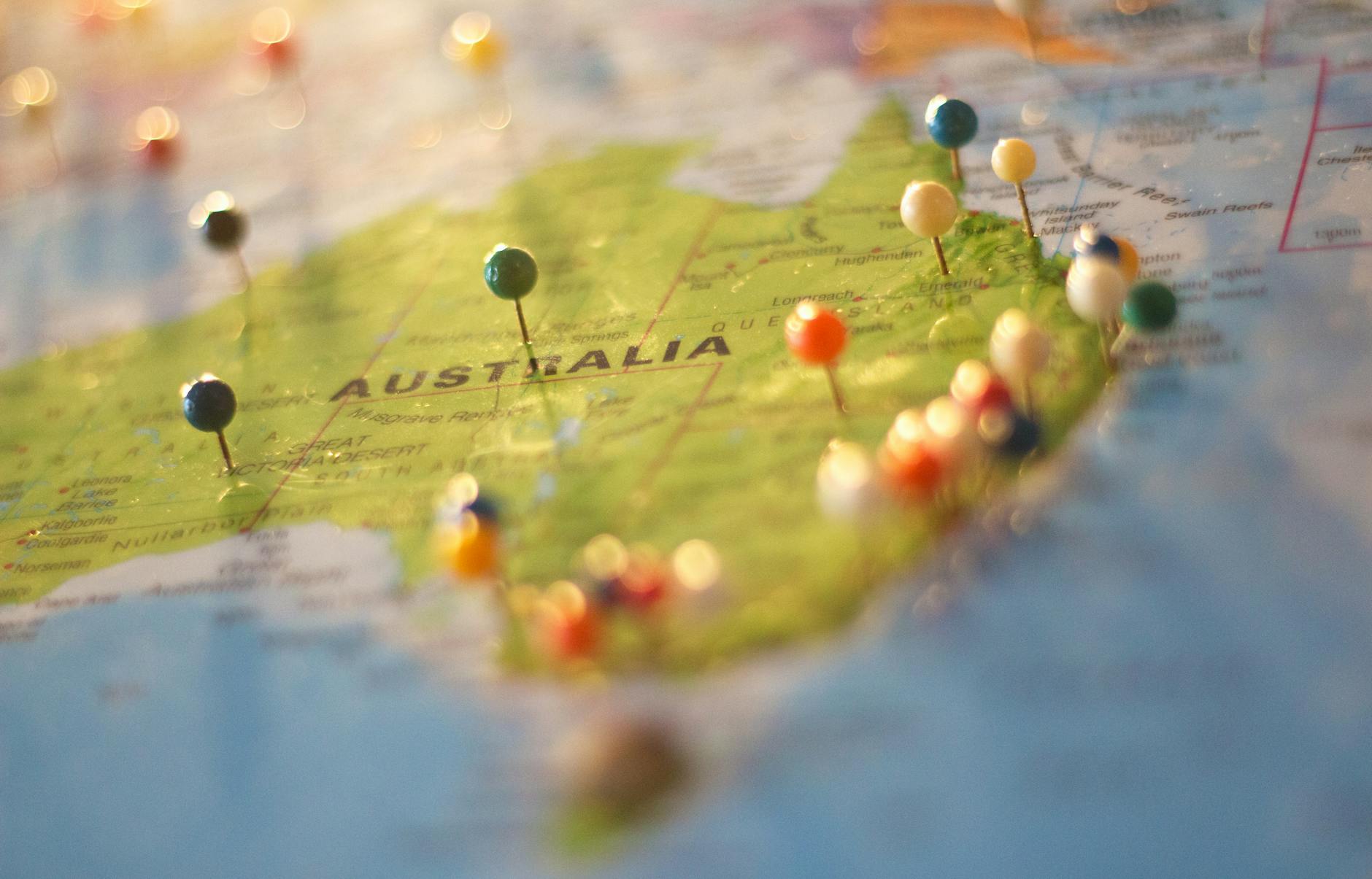What is Australia’s Largest Suburb?
As Australians continue to gravitate toward suburban living, a common question arises: What is Australia’s largest suburb? This question often leads to fascinating insights into where Australians are choosing to live and why. It also highlights how population density, housing trends, and urban development shape the country’s evolving suburban landscape.
Australia’s urban landscape is a unique blend of sprawling metropolises and rapidly expanding suburbs, each playing a crucial role in shaping the nation’s demographic and cultural identity. Recently, suburban growth has surged around Melbourne and Sydney, turning quiet rural areas into vibrant residential hubs.
Defining Australia’s Largest Suburb
When discussing the Australia’s largest suburb, it’s essential to clarify what we mean by “largest.” Unlike rural areas, where sheer land size often determines prominence, suburbs are usually measured by population density and residential growth. For this discussion, the focus is on the suburbs with the highest population counts rather than geographic size.
Population-based rankings offer a clear insight into which suburbs are thriving as residential hubs. This distinction matters because the largest geographic suburbs may not always align with those boasting the highest number of residents. The latest 2021 Census data shows which Australian suburbs attracted the most residents and reveals community growth patterns.
Understanding suburb size by population gives a better picture of urban growth and housing trends across Australia. This approach highlights areas where Australians settle and regions with the highest infrastructure, amenities, and community service growth.
Australia’s Largest Suburb – The Top 5 by Population
Australia’s largest suburb are growing at an incredible pace, and a few have risen to the top as the most populous in the country. These suburbs, mainly on Melbourne and Sydney’s outskirts, highlight Australia’s preference for spacious suburban living near cities. Let’s look at the top five suburbs by population, as of the latest 2021 Census data.

1. Point Cook, VIC
Point Cook in Victoria ranks as Australia’s largest suburb by population, home to approximately 66,781 residents. Southwest of Melbourne, Point Cook transformed from a small locality to a thriving suburb due to city access, expanding infrastructure, and attractive amenities. The suburb offers vast parklands, shopping districts, and strong community ties, attracting families and young professionals.
2. Craigieburn, VIC
Coming in close behind in Australia largest suburb list, Craigieburn boasts a population of 65,178 residents. In Melbourne’s north, Craigieburn rapidly developed over the past decade, shifting from semi-rural to a dynamic urban center. Affordable housing, new schools, and accessible transport options have made it a hotspot for new homeowners and families.
3. Tarneit, VIC
With 56,370 residents, Tarneit is another Melbourne suburb experiencing swift growth. Known for its multicultural community and family-friendly environment, Tarneit has benefited from Melbourne’s westward expansion. Modern housing, diverse dining, and reputable schools attract residents to this suburb for a balanced lifestyle outside the city.
4. Rouse Hill, NSW
Rouse Hill, in Sydney’s northwest, is home to over 52,000 people. Although ranked fourth, Rouse Hill showcases Sydney’s suburban growth with its retail spaces, residential areas, and green parks. Rouse Hill’s strong transport links and thriving local economy have made it a suburban center in Greater Sydney.
5. Pakenham, VIC
Completing the top five, Pakenham hosts approximately 50,000 residents. Situated on Melbourne’s southeastern edge, Pakenham has grown rapidly due to the region’s suburban sprawl and demand for affordable housing. Pakenham combines rural charm with modern amenities, providing residents a peaceful lifestyle close to urban conveniences.
These five suburbs reflect a clear trend: Australians are increasingly choosing spacious, well-planned communities near major cities. Modern amenities, green spaces, and community infrastructure make these suburbs appealing to families, young professionals, and retirees. As population density rises in these areas, they continue to shape the future of Australian suburban life.
According to ABS 2021 Census the top 30 populous suburbs are as follows:
| Point Cook Vic | 66,781 |
| Craigieburn Vic | 65,178 |
| Tarneit Vic | 56,370 |
| Melbourne Vic | 54,941 |
| Pakenham Vic | 54,118 |
| Reservoir Vic | 51,096 |
| Blacktown NSW | 50,961 |
| Berwick Vic | 50,298 |
| Werribee Vic | 50,027 |
| Port Macquarie NSW | 47,693 |
| Dubbo NSW | 43,516 |
| Glen Waverley Vic | 42,642 |
| Orange NSW | 41,232 |
| Castle Hill NSW | 40,874 |
| Auburn NSW | 39,333 |
| Sunbury Vic | 38,851 |
| St Albans Vic | 38,042 |
| Baldivis WA | 37,697 |
| Baulkham Hills NSW | 37,415 |
| Frankston Vic | 37,331 |
| Hoppers Crossing Vic | 37,216 |
| Southport Qld | 36,786 |
| Truganina Vic | 36,305 |
| Mount Waverley Vic | 35,340 |
| Bankstown NSW | 34,933 |
| Mildura Vic | 34,565 |
| Canning Vale WA | 34,504 |
| Preston Vic | 33,790 |
| Rowville Vic | 33,571 |
| Epping Vic | 33,489 |
| Merrylands NSW | 32,472 |
Source: The Census Expert
Growth Patterns of Australia’s Largest Suburbs
The rapid expansion of Australia’s suburbs reflects broader trends in urban planning, migration, and housing preferences. Suburbs near Melbourne and Sydney are growing fast, attracting Australians seeking larger homes, affordable living, and urban convenience with nature. But what drives this suburban boom, and why are certain areas growing faster than others?
1. Affordable Housing and Land Availability
With rising city housing prices, Australians are increasingly choosing suburban areas with more affordable land. Suburbs like Craigieburn, Tarneit, and Pakenham in Victoria offer more space for less cost, appealing to families and first-time homeowners. Large-scale developments in these areas provide modern housing options and are designed to cater to a range of budgets, further attracting diverse communities.
2. Infrastructure and Transportation Links
Investment in transportation and infrastructure has played a crucial role in shaping Australia’s suburban growth. Suburbs like Rouse Hill in Sydney and Tarneit in Melbourne benefit from new train lines and expanded road networks. Easy access to city centers allows residents to enjoy a suburban lifestyle without sacrificing job opportunities and urban amenities.
3. Community Amenities and Lifestyle Appeal
Modern suburbs are not just residential areas—they’re comprehensive communities. Developers focus on creating neighborhoods with parks, schools, shopping centers, and health facilities, making them self-sufficient and attractive to residents. Point Cook and Rouse Hill exemplify suburbs with leisure options, quality schools, and green spaces that attract families and young professionals. The community-focused infrastructure fosters a sense of belonging and makes suburban living more desirable.
4. Shifts in Lifestyle Preferences
The pandemic accelerated a shift toward remote work and flexible lifestyles, prompting many to reconsider the need to live in the urban core. Suburban areas, with open spaces and larger homes, offer a better quality of life without daily commuting. As a result, people are moving to suburbs where they can have a home office, outdoor space, and access to natural surroundings.
5. Migration and Multicultural Growth
Australia’s suburbs are also enriched by diverse, multicultural communities. Newcomers and interstate migrants often choose suburban areas for affordable housing and established, culturally diverse communities. Suburbs like Tarneit and Craigieburn have become vibrant, multicultural areas, attracting people from various backgrounds and creating rich, inclusive environments.
The growth patterns in Australia’s suburbs reveal a dynamic shift in how and where people choose to live. With affordable housing, strong infrastructure, and modern amenities, these suburbs play a key role in Australia’s future development. This trend indicates that expanding urban fringes will make suburban living increasingly central to the Australian lifestyle.
Australia’s Population Distribution by State
Australia’s largest suburbs are not spread evenly across the country. Instead, they are primarily concentrated in Victoria and New South Wales, reflecting the unique demographic and urban development patterns of each state. Here, we break down the distribution of Australia’s most populous suburbs by state to understand what drives growth in specific regions and how each state’s suburban landscape is evolving.
1. Victoria: A Hub of Suburban Growth
Victoria leads in suburban population growth, especially around Melbourne. Suburbs like Point Cook, Craigieburn, and Tarneit top the charts, with each housing tens of thousands of residents. Melbourne’s northern and western fringes have become hotspots for families, young professionals, and migrants seeking affordable housing and a community-focused lifestyle. These suburbs offer proximity to the city, well-developed infrastructure, and amenities that make them highly desirable. Victoria’s strong suburban growth can be attributed to well-planned developments, transportation investments, and a robust housing market catering to various income levels.
2. New South Wales: Sydney’s Expanding Suburbs
In New South Wales, suburban growth centers around Sydney’s outskirts, with suburbs like Rouse Hill and Camden seeing rapid increases in population. Sydney’s high property prices in central areas have driven many to seek more affordable homes in outer suburbs that still offer convenient commuting options. The New South Wales government’s focus on expanding public transport and road infrastructure has made these suburbs more accessible, encouraging people to settle in these growing communities. Rouse Hill, for instance, benefits from the new Metro North West rail link, making it a popular choice for those who work in the city but prefer suburban living.
Lake Macquarie property investment is an affordable option.
3. Queensland: Steady Growth with a Relaxed Lifestyle
While Queensland’s suburban growth is more gradual, the state has seen increasing demand for lifestyle-oriented suburbs around Brisbane and the Gold Coast. Suburbs such as Springfield and North Lakes have been designed with a strong focus on lifestyle, offering open spaces, community parks, and a range of family-friendly amenities. Queensland’s attractive climate, coupled with more affordable housing than Sydney and Melbourne, has made it a popular choice for families and retirees. As people continue to seek more spacious and relaxed living environments, these suburbs are set to grow even further.
4. Western Australia: Growth Beyond Perth
Western Australia’s suburban growth largely centers around Perth, where suburbs like Baldivis and Ellenbrook are expanding to accommodate the growing population. The state’s mining-driven economy and job opportunities have attracted interstate and international migrants, many of whom choose suburban living for its affordability and family-friendly environment. Perth’s suburbs, though smaller than those in Melbourne or Sydney, show steady growth aligned with local economy and lifestyle preferences.
5. South Australia: Smaller, Stable Suburbs
South Australia’s suburban landscape differs, with smaller suburbs and less rapid growth compared to the eastern states. Adelaide, the state’s capital, is known for its evenly distributed, smaller suburban communities, with Morphett Vale being the largest but ranking much lower nationally in population size. The city’s layout, which offers a high quality of life with less density, means that suburbs are generally more modest in population. This provides a unique contrast to the growth-heavy regions in other states, offering a quieter suburban experience.
Each state’s approach to suburban development reflects its unique geographic, economic, and cultural factors. Victoria and New South Wales, with their booming suburbs, showcase Australia’s trend toward expansive, high-population neighborhoods, especially near major cities. Meanwhile, Queensland, Western Australia, and South Australia offer alternative suburban experiences, each catering to diverse lifestyle preferences. This varied suburban landscape highlights the breadth of Australia’s growth and the distinct qualities that make each state’s suburbs appealing in their own right.
Interpreting Population Data: More than Just Numbers
When analyzing the population data of Australia’s largest suburb, it’s essential to go beyond the surface and understand what these numbers truly represent. Population figures offer valuable insights, but they can sometimes paint an incomplete or even misleading picture if viewed in isolation. By delving deeper, we gain a richer perspective on suburban life, urban development, and the challenges that come with growth.
1. Population Density and Quality of Life
High population numbers often indicate thriving communities, but density can impact residents’ day-to-day experiences. Suburbs like Point Cook and Craigieburn may have large populations, but factors such as access to green spaces, traffic congestion, and availability of essential services affect residents’ quality of life. Understanding population data alongside density helps us appreciate how well a suburb meets its community’s needs.
2. Economic Indicators and Employment Opportunities
A high population alone doesn’t guarantee economic growth or job opportunities. For example, while a suburb may have many residents, its economy may still rely on nearby urban centers. Evaluating employment rates, job diversity, and local business growth alongside population data provides a clearer picture of whether an area can sustain its community economically. This context is crucial for prospective residents and businesses alike, as it highlights the suburb’s potential for long-term stability.
3. Infrastructure and Service Strain
Rapid population growth can put significant pressure on a suburb’s infrastructure. Suburbs experiencing fast development, like Tarneit or Rouse Hill, often need expanded transport links, healthcare facilities, and educational institutions to keep pace with demand. Without adequate infrastructure, the benefits of suburban life can diminish, leading to overcrowded schools, longer commutes, and limited access to health services. Reviewing how well a suburb’s infrastructure aligns with its population growth can reveal critical insights about its sustainability.
4. Community Diversity and Social Cohesion
Larger populations often bring a richer cultural tapestry, creating vibrant, diverse communities. Suburbs like Craigieburn and Tarneit are known for their multicultural demographics, which can lead to a wealth of cultural exchange, community events, and inclusive living environments. However, interpreting population data through the lens of diversity also helps address challenges like language barriers and integration support, which play a role in the social health of these communities.
5. Crime Rates and Public Safety Perception
Population data can influence how safe a suburb appears, as larger populations may have higher crime numbers purely due to size. However, understanding crime rates relative to population size helps avoid misinterpretation. When looking at suburbs with high populations, it’s essential to consider crime rates proportionally to avoid misleading conclusions and instead assess overall safety accurately.
6. Long-term Growth Trends
Finally, population data reveals more when observed as a trend over time. Some suburbs experience rapid booms, while others grow steadily, indicating different stages of development and investment potential. Suburbs with stable growth often signal well-established infrastructure, while those in rapid expansion phases may suggest high demand but potential growing pains.
Why Knowing About Population Trends is Important
Understanding population trends is crucial for anyone interested in Australia’s evolving suburbs, whether you’re a prospective homeowner, urban planner, or simply curious about where the country is headed. Population trends reveal not only where people are choosing to live but also how these areas develop and adapt to changing needs. Here’s why keeping an eye on these trends matters:
1. Guiding Infrastructure Development
Population trends help governments and city planners decide where to allocate resources and build essential infrastructure. When a suburb’s population grows quickly, there’s an increased need for roads, schools, hospitals, and public transportation. Areas like Craigieburn and Rouse Hill have seen expanded transport links and new schools due to rapid population growth, improving accessibility and quality of life for residents.
2. Supporting Local Economies
As populations grow, so does demand for local services, businesses, and job opportunities. Suburbs with high population growth often attract new businesses, which boosts the local economy and provides more jobs within the community. Understanding population trends helps businesses decide where to set up, leading to a more vibrant local economy. For example, shopping centers and dining spots have flourished in growing suburbs like Point Cook, supporting both residents and local business owners.
3. Promoting Sustainable Urban Planning
Effective urban planning hinges on anticipating population growth and ensuring that suburbs grow sustainably. By analyzing population trends, planners can create balanced communities with green spaces, eco-friendly infrastructure, and efficient public services. This approach not only preserves the environment but also enhances residents’ quality of life. Suburbs that grow without a clear plan risk overdevelopment, leading to congestion, pollution, and a decline in liveability.
4. Meeting Housing Demand
Rapid population growth in certain suburbs drives demand for housing, impacting property prices and rental availability. Tracking these trends helps developers and the housing market respond to demand, ideally preventing housing shortages and price surges. It also gives potential homebuyers insight into emerging suburbs that may offer affordability now but are expected to grow, making them wise investment choices.
5. Improving Social Services and Community Resources
Population trends highlight the need for social services, such as healthcare facilities, schools, and recreational centers. As populations expand, local governments need accurate data to provide resources that keep pace with community needs. Suburbs that experience surges in family populations, for example, often require more schools and childcare facilities, while those with older populations benefit from accessible healthcare and senior services.
6. Shaping Future Investment and Growth
For investors, population trends are valuable indicators of where future opportunities lie. Suburbs experiencing consistent growth tend to attract investment, leading to better amenities, new business opportunities, and rising property values. Investors and developers look to population data to make informed decisions about where to build, create commercial hubs, or develop community spaces, directly shaping the future landscape of these areas.
Monitoring population trends provides a roadmap to Australia’s future, showing how urban and suburban spaces will evolve and adapt to new demands. These trends aren’t just numbers—they reflect the changing lives, needs, and aspirations of Australians and play a central role in ensuring that our suburbs remain vibrant, accessible, and sustainable for generations to come.
Australia’s Largest Suburb Supports Evolving Communities
Australia’s largest suburb is a reflection of more than just numbers—they tell a story of evolving communities, shifting lifestyles, and a nation adapting to meet its people’s changing needs. From Point Cook’s family-friendly charm to Rouse Hill’s bustling development, these suburbs showcase the allure of spacious living combined with modern amenities and accessible infrastructure. As Australians seek a balance between urban convenience and suburban comfort, these growing communities have become essential to the country’s future.
Understanding the trends behind Australia’s suburban growth offers insights for homeowners, investors, and urban planners alike. Recognizing where and why people are choosing to settle helps guide sustainable development, ensuring that growing suburbs can meet demand without sacrificing liveability. Each suburb has its unique identity, shaped by the people who live there and the resources that support them.
Australia’s suburban growth patterns reveal a collective move towards inclusive, well-planned, and self-sufficient communities. By analyzing population data, understanding growth patterns, and considering future needs, we can appreciate the role these vibrant suburbs play in shaping Australia’s urban landscape. Whether you’re exploring new areas, planning a move, or simply observing these trends, Australia’s largest suburbs provide a fascinating glimpse into the nation’s journey toward a bright, connected future.







